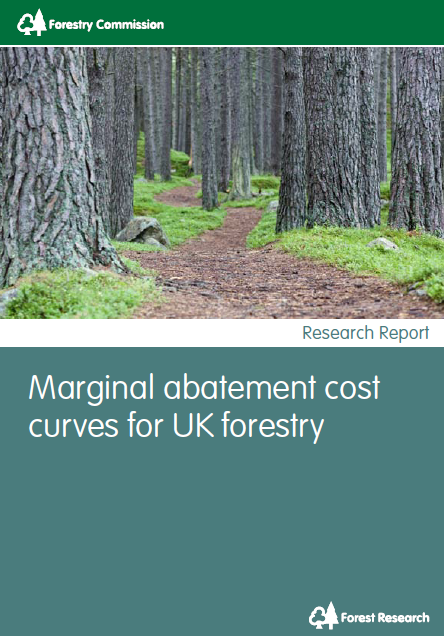Summary
Recommendations on methods to estimate marginal abatement cost curves for forestry-based climate change mitigation options in the UK

Summary
The UK Government wants to minimise the cost of meeting its national greenhouse gas (GHG) reduction targets. The costs of different measures and their potential to reduce emissions or sequester atmospheric GHGs can be evaluated using a marginal abatement cost curve (MACC). This ranks measures by their cost-effectiveness with the least expensive first, and also shows the level of abatement each can provide. Forest Research reviewed previous estimates for UK forestry mitigation options, evaluating their assumptions and methodologies. Its findings provide evidence of the cost-effectiveness of forestry options and illustrate reasons why estimates vary.
Key findings and recommendations
- Three primary studies have estimated MACCs for UK forestry mitigation measures
- Estimates from these studies suggest forestry measures are highly cost-effective, according to the UK Government’s benchmark estimates for the social value of carbon
- MACC estimates are sensitive to a range of factors including the methodology for calculating cost-effectiveness as well as the choice of species planted, the forest management regime, environmental conditions, inclusion of co-benefits and assumed costs of switching from agricultural land uses.
Status
The project was completed in 2013.
General Content
Related pages
Downloads
Funding & Partners
-
 Commissioned and funded by the Forestry Commission
Commissioned and funded by the Forestry Commission

